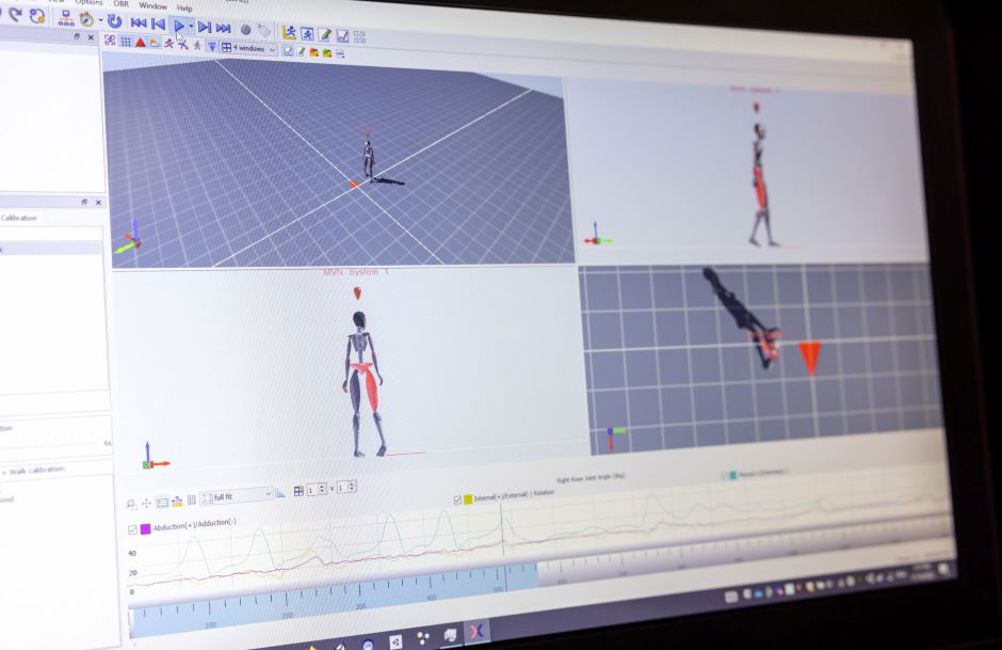The team has published two studies showing that by combining human movement data gathered from wearable tech with a new medical AI technology, they can identify clear movement patterns, predict future disease progression and increase the efficiency of clinical trials in two different disorders, Duchenne muscular dystrophy (DMD) and Friedreich’s ataxia (FA).
DMD and FA are rare, degenerative, genetic diseases that affect movement and eventually lead to paralysis. There are currently no cures for either disease, but researchers hope that these results will significantly speed up the search for new treatments.
Progression of FA and DMD is normally tracked through intensive testing in a clinical setting. According to the team, their papers offer a more precise assessment that also increases the accuracy and objectivity of the data collected.
The researchers estimate that using these disease markers mean that significantly fewer patients are required to develop a new drug when compared to current methods. This is particularly important for rare diseases where it can be hard to identify suitable patients.
Scientists hope that as well as using the technology to monitor patients in clinical trials, it could also one day be used to monitor or diagnose a range of common diseases that affect movement behaviour such as dementia, stroke and orthopaedic conditions.
Senior and corresponding author of both papers, Professor Aldo Faisal, from Imperial College London’s Departments of Bioengineering and Computing, said that the approach gathers ‘huge’ amounts of data from a person’s full-body movement, more than any neurologist would have the precision or time to observe in a patient.
More on AI and wearables in healthcare
“Our AI technology builds a digital twin of the patient and allows us to make unprecedented, precise predictions of how an individual patient’s disease will progress,” Faisal said in a statement.
The team incudes researchers from Imperial as well as the MRC London Institute of Medical Sciences, the UKRI Centre in AI for Healthcare, UCL Great Ormond Street Hospital for Child Health, the University of Bayreuth in Germany and the Gemelli Hospital in Rome, Italy, among others.
In the DMD-focused study, researchers and clinicians at Imperial, Great Ormond Street Hospital and UCL trialled the body worn sensor suit in 21 children with DMD and 17 healthy age-matched controls. The children wore the sensors while carrying out standard clinical assessments (like the six-minute walk test) as well as going about their everyday activities.
In the FA study, teams at Imperial College London and the Ataxia Centre, UCL Queen Square Institute of Neurology worked with patients to identify key movement patterns and predict genetic markers of disease. FA is the most common inherited ataxia and is caused by an unusually large triplet repeat of DNA, which switches off the FA gene. Using this new AI technology, the team used movement data to accurately predict the ‘switching off’ of the FA gene, measuring how active it was without the need to take any biological samples from patients.
The team administered a rating scale to determine level of disability of ataxia SARA and functional assessments like walking, hand/arms movements (SCAFI) in nine FA patients and matching controls. The results of these validated clinical assessments were then compared with the one obtained from using the novel technology on the same patients and controls, the latter showing more sensitivity in predicting disease progression.

In both studies, all data from the sensors was collected and fed into the AI technology to create individual avatars and analyse movements. This allowed researchers to define key movement fingerprints seen in children with DMD and adults with FA, that were different in the control group. Many of these AI-based movement patterns had not been described clinically before in either DMD or FA, researchers said.
Scientists also discovered that the new AI technique could significantly improve predictions of how individual patients’ disease would progress over six months compared to current gold-standard assessments. Such precise predictions could allow patients to access novel therapies quicker and help dose drugs more precisely.
In the DMD study, researchers showed that this new technology could reduce the numbers of children required to detect if a novel treatment would be working to a quarter of those required with current methods.
Similarly, in the FA study, researchers showed that they could achieve the same precision with ten patients instead of over 160. Additionally, the technology allows to study patients across life-changing disease events such as loss of ambulation whereas current clinical trials target either ambulant or non-ambulant patient cohorts, the team said.











McMurtry Spéirling defies gravity using fan downforce
Ground effect fans were banned from competitive motorsport from the end of the 1978 season following the introduction of Gordon Murray's Brabham...